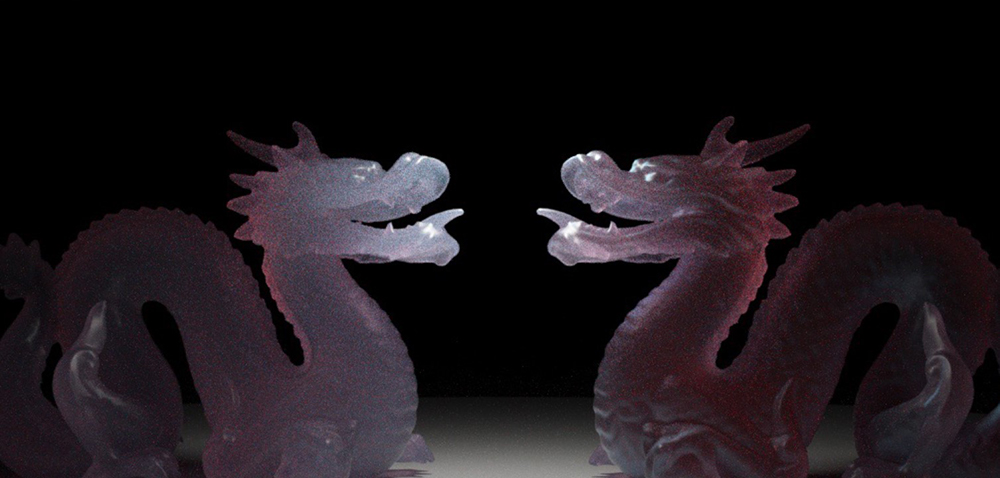
This medium node uses an albedo texture for specifying the expected SSS color, as opposed to the traditional absorption/scattering color spectrum in other medium nodes. You can also specify a color radius texture, which represents how far the light scatters into the medium.

Figure 1: The results of using the Random Walk Medium on a closed surface.
Density
Determines the scale of the absorption and scattering.
Volume Step Length
Only applicable when rendering Volume mediums. This attribute may need to be adjusted depending on the surface. The default value for the step length is 4 meters. Should the volume be smaller than this, the step length will need to be decreased. Please note that decreasing this will reduce the render speed. Increasing this value will cause the ray marching algorithm to take longer steps. Should the step length far exceed the volume’s dimensions, then the ray marching algorithm will take a single step through the whole volume. Most accurate results are obtained when the step length is as small as possible.
Volume Shadow Ray Step Length
Step length that is used by the shadow ray for marching through volumes.
Use Volume Step Length for Volume Shadow Ray Step Length
Check box for using the Volume Step Length for the Volume Shadow Ray Step Length as well.
Allows a texture to control a volume's sample positions displacement.
Albedo
Determines scattering albedo color. The coefficients are determined from parameter using the mean free path.
Radius
Determines the depth that the light can scatter in the medium.
Bias
Determines the bias of the subsurface scattering. Higher values use biased sampling which usually provides better results for lower depth settings and more speed for objects with low curvature.